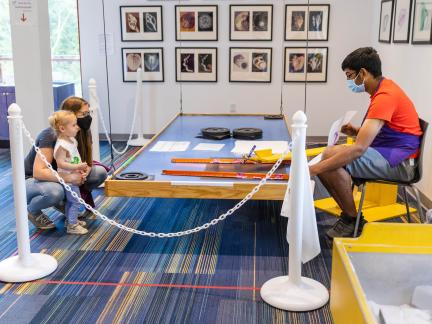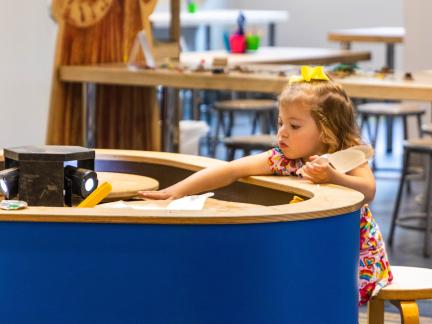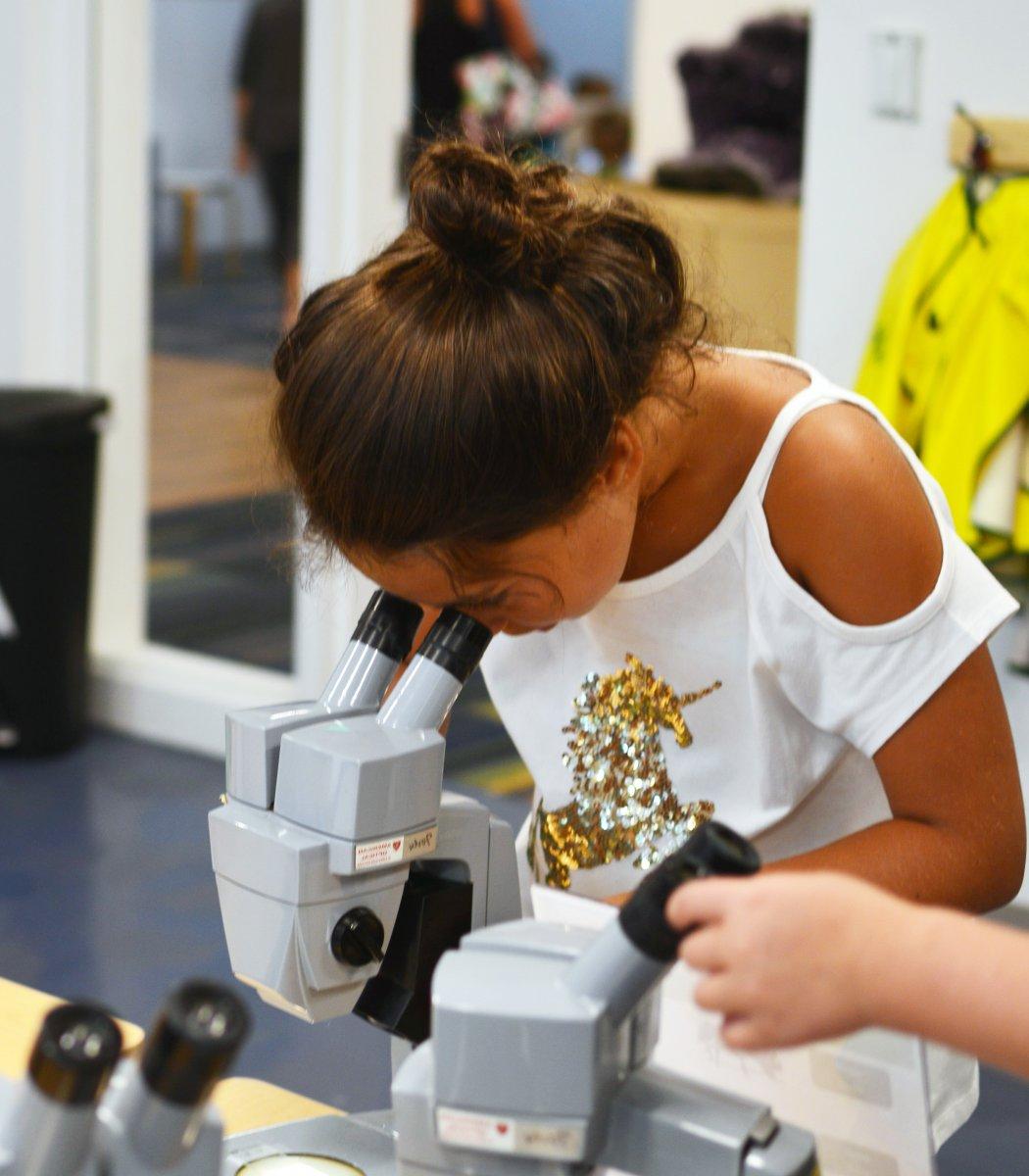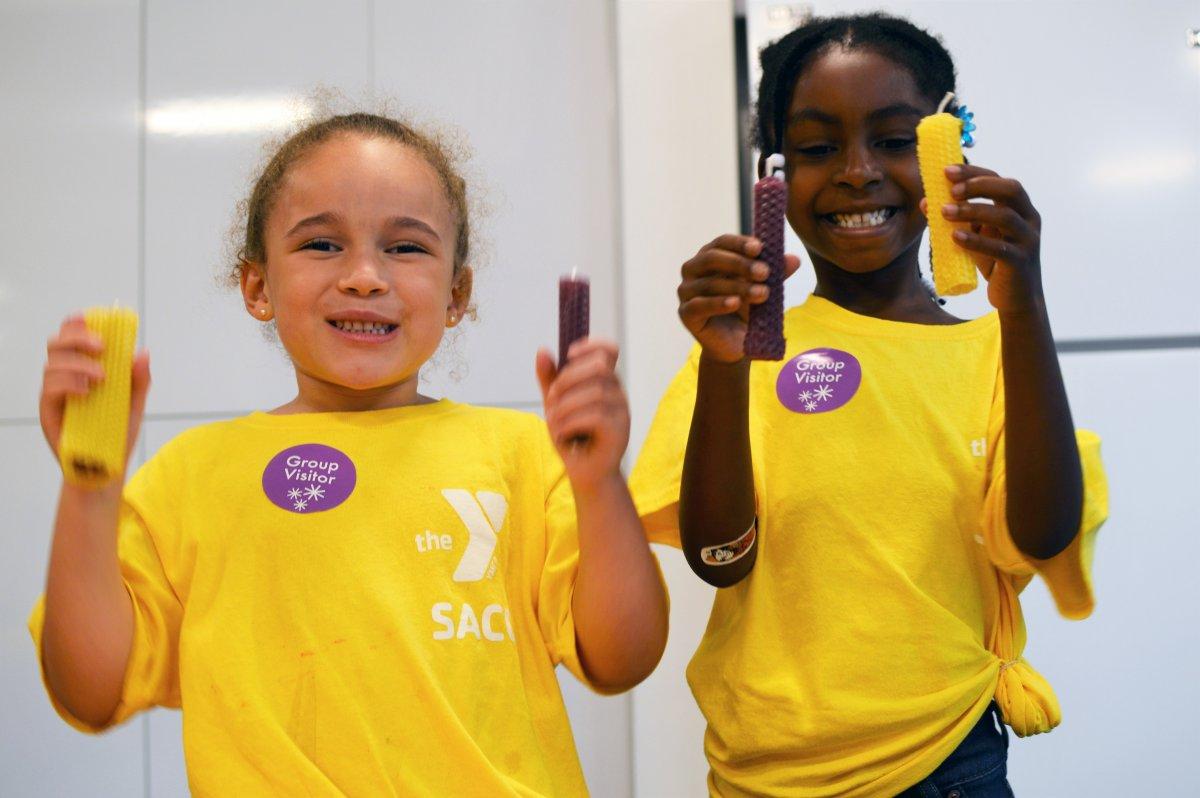All About Bees
“How do bees make honey?”
“Do bees have hands?”
“What makes different honeys taste different?”
“How do bees make wax?”
These are some of the insightful questions we received at my All About Bees program at the Discovery Museum in the past two years.
All About Bees features five drop-in activities: 1) Be the Beekeeper, 2) Honey Tasting, 3) Rolled Wax Candles, 4) The Bee Box, and 5) Honey Bee Anatomy. A grant from the American Association of Professional Apiculturists (AAPA) Extension Activities Award allowed me to purchase new supplies for the program, including colorful wax for candle making, a new teaching hive, and honey sticks to pass out.
Be the Beekeeper
At this station, I set up a brand-new Mann Lake hive with teaching frames, a beekeeping veil, and a pair of beekeeping gloves. With the help of an undergraduate intern, kids donned the bee gear and opened the hive as if they were the beekeeper, examining the teaching frames along the way. Kids loved getting to know what it looks like inside the hive, without the fear of getting stung. This was also a great photo opportunity for parents and guardians!
Honey Bee Anatomy
Here, kids had the chance to use a fancy piece of equipment—microscopes! Under each microscope, I put a different bee part: wings, a back leg, the stinger. Believe it or not, the stinger was the most popular. Kids marveled at the sharp tip and the tiny barbs. I was also happy to see kids harnessing their natural curiosity by putting their wax candles under the microscopes to get a closer look.
The Bee Box
With the help of a colleague at Tufts and her carpenter roommate, I developed the bee box to show kids how honey bees see the world. Inside the bee box is a fake flower garden with UV patterns on the flowers. Children press a button to illuminate the box with white light, and then another button to illuminate the box with black light to emulate how bees see the world. Most times when children hit the black light button, I hear gasps as the UV patterns are revealed. This activity teaches children the importance of considering how other organisms sense the world around us, and many children tell me that they’d prefer to see the world as the bees do!
Rolled Wax Candles
With the help of another undergraduate intern, kids made their own rolled wax candles with our new vibrantly-colored forest green and burgundy wax! With Dadant’s brightly colored wax sheets, this activity engages the senses of touch, smell, and sight. Kids are always proud of their own creation, and excited to take their candle home! Plus, this activity highlights an important hive product other than honey. Beeswax is an ingredient in many cosmetics, can be used for cooking, and is even a natural anti-inflammatory!
Honey Tasting
The honey tasting station is one of my favorites. I gave visitors a taste of three very different honeys: hydrangea honey (Seaside Bees, Tiverton, RI), wildflower honey (Boston Honey Company, Boston, MA), and meadowfoam honey (GloryBee, Eugene, OR). The hydrangea honey is light and floral, wildflower honey is smooth and sweet, meadowfoam honey is granulated and…tastes like marshmallows! I gave samples of honey in that order and each time, eyes lit up at the final taste of meadowfoam honey. Many kids have only experienced clover honey from the plastic bear in the grocery store, and don’t think they like honey. Meadowfoam honey, made from a plant found in the Pacific Northwest, is a game changer. The difference in tastes stems from the different nectar chemistry of the plants; this gives me a chance to tell visitors about my research on honey bee nutrition.
I always have a blast running my All About Bees program at the Discovery Museum, but this one was the best one yet! The new open design of the classroom in the renovated museum was bright, visible, and welcoming. With this program, I aim to help kids and their families appreciate the honey bee for more than just an insect that stings. I also hope to inspire visitors to take a moment and observe pollinators the next time they walk through a lawn covered in dandelions, sit near a garden, or go on a hike.
Rachael E. Bonoan, Ph.D., is a post-doctoral researcher at Tufts University. Dr. Bonoan will run her All About Bees program again at Discovery Museum on August 15, 2019, from 12pm to 3pm.







Comments
Add new comment